S-class: Difference between revisions
Pbcjohnston (talk | contribs) SEO updates |
Pbcjohnston (talk | contribs) Fixed formatting |
||
| (2 intermediate revisions by the same user not shown) | |||
| Line 1: | Line 1: | ||
{{#seo:|title=S-class submarines U.S. Navy - PigBoats.COM}} | {{#seo:|title=S-class submarines U.S. Navy - PigBoats.COM|title_mode=replace|keywords=S-boat, sugar boat, US S-class submarine}} | ||
{{#seo:|description=Notes, photographs, and pictures of the U.S. Navy's S-class submarines.}} | {{#seo:|description=Notes, photographs, and pictures of the U.S. Navy's S-class submarines.}} | ||
| Line 5: | Line 5: | ||
=== <big>Design and Construction Notes</big> === | === <big>Design and Construction Notes</big> === | ||
<div style="text-align: justify;"><span style="color:#00008B">The 51 S-class open ocean patrol submarines marked the transition away from the harbor and coastal defense strategic concept that had dominated USN submarine doctrine since 1900. The concept that drove their design was offensive in nature, with the intention of having the S-class cross the Atlantic to carry the fight to a potential enemy. Significantly, this class also marked the emergence of the USN as its own design agent, with 19 of the boats built to a design developed for the first time by the Navy's Bureau of Construction & Repair. This effectively ended the Navy's total reliance on private contractors for submarine design work, forever altering the established paradigm of submarine acquisition. They were built to five distinctly different designs with several variations at four different shipyards. The designs were from the Electric Boat Company (EB) of New York City (later Groton, CT.), the Lake Torpedo Boat Company (LTB) of Bridgeport, CT., and the Portsmouth Navy Yard in Kittery, ME. While similar in military and operational capability, the various designs were vastly different in installed equipment, interior arrangement, and external appearance and essentially the 51 boats were a class in name only. The details can be confusing, so if you are interested in sorting it all out, we highly recommend perusing the Visual Guide articles at this link: [https://pigboats.com/index.php?title=Johnston,_David '''A Visual Guide to the S-class Submarines 1918-1945 Parts 1, 2, & 3''']. | <div style="text-align: justify;"><span style="color:#00008B">The 51 S-class open ocean patrol submarines marked the transition away from the harbor and coastal defense strategic concept that had dominated USN submarine doctrine since 1900. The concept that drove their design was offensive in nature, with the intention of having the S-class cross the Atlantic to carry the fight to a potential enemy. Significantly, this class also marked the emergence of the USN as its own design agent, with 19 of the boats built to a design developed for the first time by the Navy's Bureau of Construction & Repair. This effectively ended the Navy's total reliance on private contractors for submarine design work, forever altering the established paradigm of submarine acquisition. They were built to five distinctly different designs with several variations at four different shipyards. The designs were from the Electric Boat Company (EB) of New York City (later Groton, CT.), the Lake Torpedo Boat Company (LTB) of Bridgeport, CT., and the Portsmouth Navy Yard in Kittery, ME. While similar in military and operational capability, the various designs were vastly different in installed equipment, interior arrangement, and external appearance and essentially the 51 boats were a class in name only. The details can be confusing, so if you are interested in sorting it all out, we highly recommend perusing the Visual Guide articles at this link: [https://pigboats.com/index.php?title=Johnston,_David '''A Visual Guide to the S-class Submarines 1918-1945 Parts 1, 2, & 3''']. Also, we also have some of the pages from the General Information Book for the S-1. The book has some interesting data that is applicable to the EB design for the S-class. It can be found at this link: [[S-1 General Information Book 1924|'''S-1 General Information Book 1924''']]. | ||
This was the largest class of submarines built for the USN prior to WWII, and they became ubiquitous in every fleet operating area in the 1920's and 1930's. However, because they were a WWI design, they were rapidly aging by 1941. Due to a lack of modern fleet submarines, the extant S-boats were pressed into war service throughout the Pacific and western Atlantic. Many of them were in the thick of the fight against the Japanese from the first day of the war. The high intensity operations took a toll on them, with six (marked by a *) being lost. Three were lost to grounding, one to a collision with a friendly warship, one to hull failure during a training mission, and one loss to enemy action (S-44). The crew members that died in service are considered to be "on eternal patrol". | |||
The class is broken down by groups below. | |||
[[File:Red bar sub new 2.jpg]] | [[File:Red bar sub new 2.jpg]] | ||
<div style="text-align: justify;"><span style="color:#000000"> | |||
=== <big>S-1 and S-18 through S-29 (EB design built at Bethlehem Quincy)</big> === | === <big>S-1 and S-18 through S-29 (EB design built at Bethlehem Quincy)</big> === | ||
Latest revision as of 12:42, 19 July 2025
Design and Construction Notes
This was the largest class of submarines built for the USN prior to WWII, and they became ubiquitous in every fleet operating area in the 1920's and 1930's. However, because they were a WWI design, they were rapidly aging by 1941. Due to a lack of modern fleet submarines, the extant S-boats were pressed into war service throughout the Pacific and western Atlantic. Many of them were in the thick of the fight against the Japanese from the first day of the war. The high intensity operations took a toll on them, with six (marked by a *) being lost. Three were lost to grounding, one to a collision with a friendly warship, one to hull failure during a training mission, and one loss to enemy action (S-44). The crew members that died in service are considered to be "on eternal patrol".
The class is broken down by groups below.
S-1 and S-18 through S-29 (EB design built at Bethlehem Quincy)
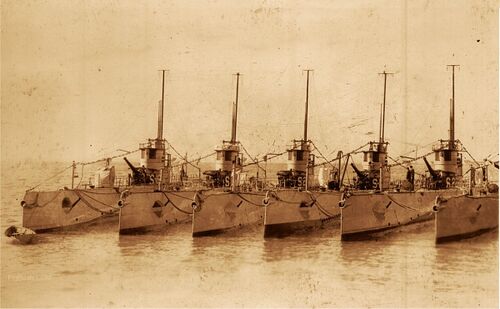
S-2 (Lake design built at Lake Torpedo Boat Company)
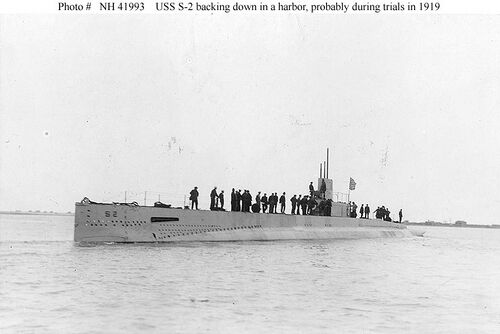
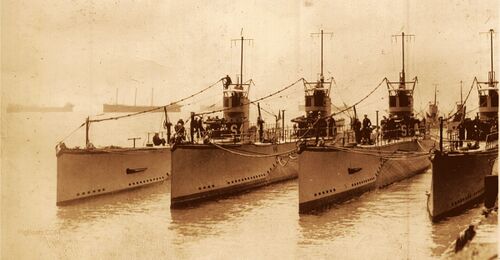
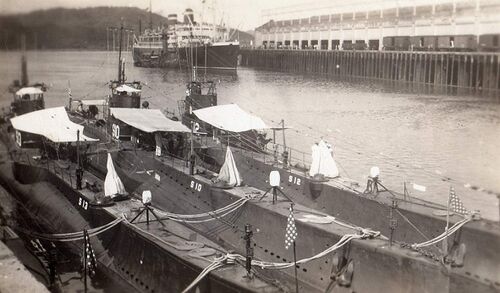
S-14 through S-17 (Government design built by Lake Torpedo Boat Company)
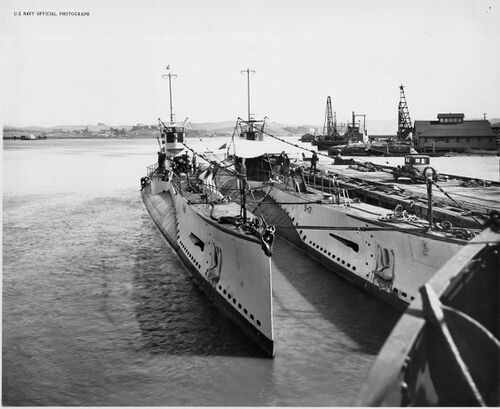
S-30 through S-41 (EB design built at Bethlehem San Francisco)
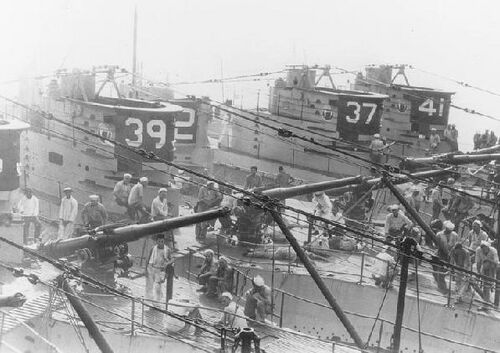
S-42 through S-47 (Modified EB design built at Bethlehem Quincy)

S-48 through S-51 (Modified Government design built by Lake Torpedo Boat Company)
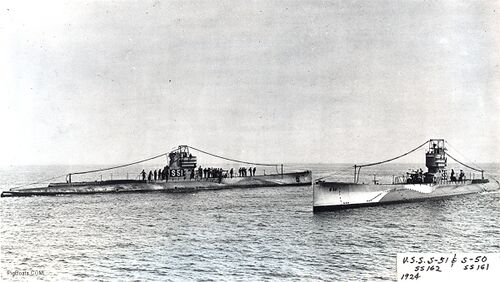
S-class general and group photos
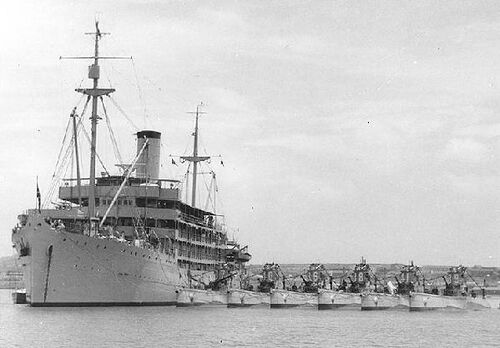
Page created by:
Ric Hedman & David Johnston
1999 - 2023 - PigBoats.COM©
Mountlake Terrace, WA, Norfolk, VA
webmaster at pigboats dot com
